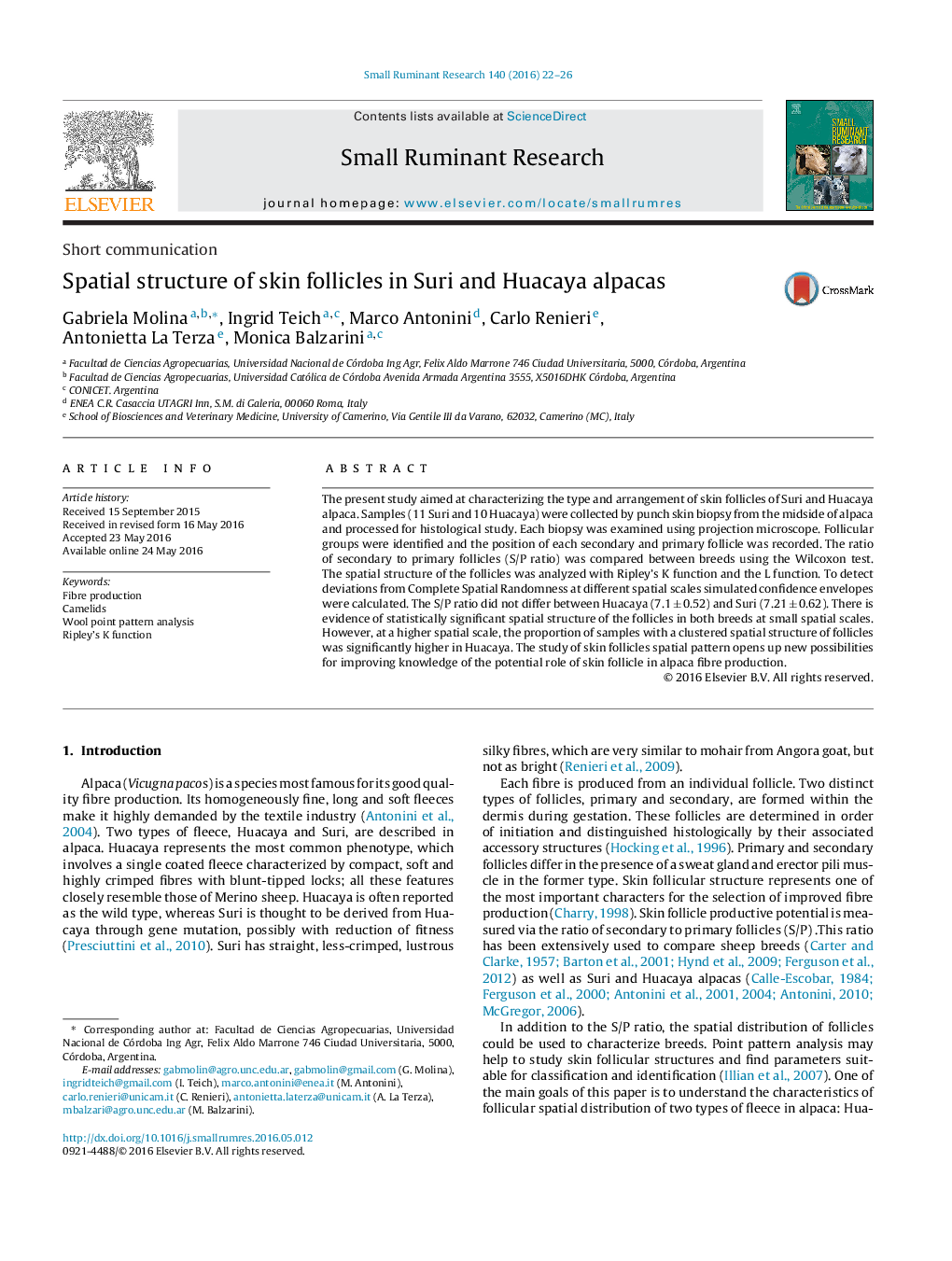| Article ID | Journal | Published Year | Pages | File Type |
|---|---|---|---|---|
| 2456652 | Small Ruminant Research | 2016 | 5 Pages |
•Skin follicular pattern was characterized in 11 Suri and 10 Huacaya alpaca samples.•No differences were found between breeds regarding the S/P ratio.•Both breeds showed a spatial structure of skin follicles at a small spatial scale.•A higher level of clustering was found in Huacaya alpacas at a higher spatial scale.
The present study aimed at characterizing the type and arrangement of skin follicles of Suri and Huacaya alpaca. Samples (11 Suri and 10 Huacaya) were collected by punch skin biopsy from the midside of alpaca and processed for histological study. Each biopsy was examined using projection microscope. Follicular groups were identified and the position of each secondary and primary follicle was recorded. The ratio of secondary to primary follicles (S/P ratio) was compared between breeds using the Wilcoxon test. The spatial structure of the follicles was analyzed with Ripley’s K function and the L function. To detect deviations from Complete Spatial Randomness at different spatial scales simulated confidence envelopes were calculated. The S/P ratio did not differ between Huacaya (7.1 ± 0.52) and Suri (7.21 ± 0.62). There is evidence of statistically significant spatial structure of the follicles in both breeds at small spatial scales. However, at a higher spatial scale, the proportion of samples with a clustered spatial structure of follicles was significantly higher in Huacaya. The study of skin follicles spatial pattern opens up new possibilities for improving knowledge of the potential role of skin follicle in alpaca fibre production.
